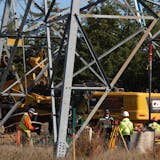Josh Thielen used to hate cornhole. Now, he plays the backyard sport professionally.
Thielen grew up in Detroit Lakes and played "bags," as it's often called in Minnesota, while tailgating for Vikings games, dueling with his two younger brothers who always seemed to win. It wasn't until Thielen moved to Livermore, Calif., six years ago that he started to take cornhole seriously by entering bar competitions.
Then, during the pandemic, he hunkered down, tossing bean bags on his driveway all summer and down the hallway all winter. In 2021, he officially became a professional player in the American Cornhole League.
Now, "I can not only compete with good players," he said. "I can compete with the best players."
The roster of pros like Thielen is expanding. According to the ACL, the league hosts 25,000 events each year, with 200,000 active players and 256 full-time pros. The sport now has its own World Cup and is taking steps to become officially internationally recognized. The ACL says cornhole could become an Olympic sport by 2032.
Unlike other sports, cornhole doesn't demand supreme athletic ability, or even much practice. And it's the accessibility that, like pickleball or bowling, has built cornhole into a seasonal sensation.
Just a board and bags
The simplicity of the sport makes it hard to find an exact history.


